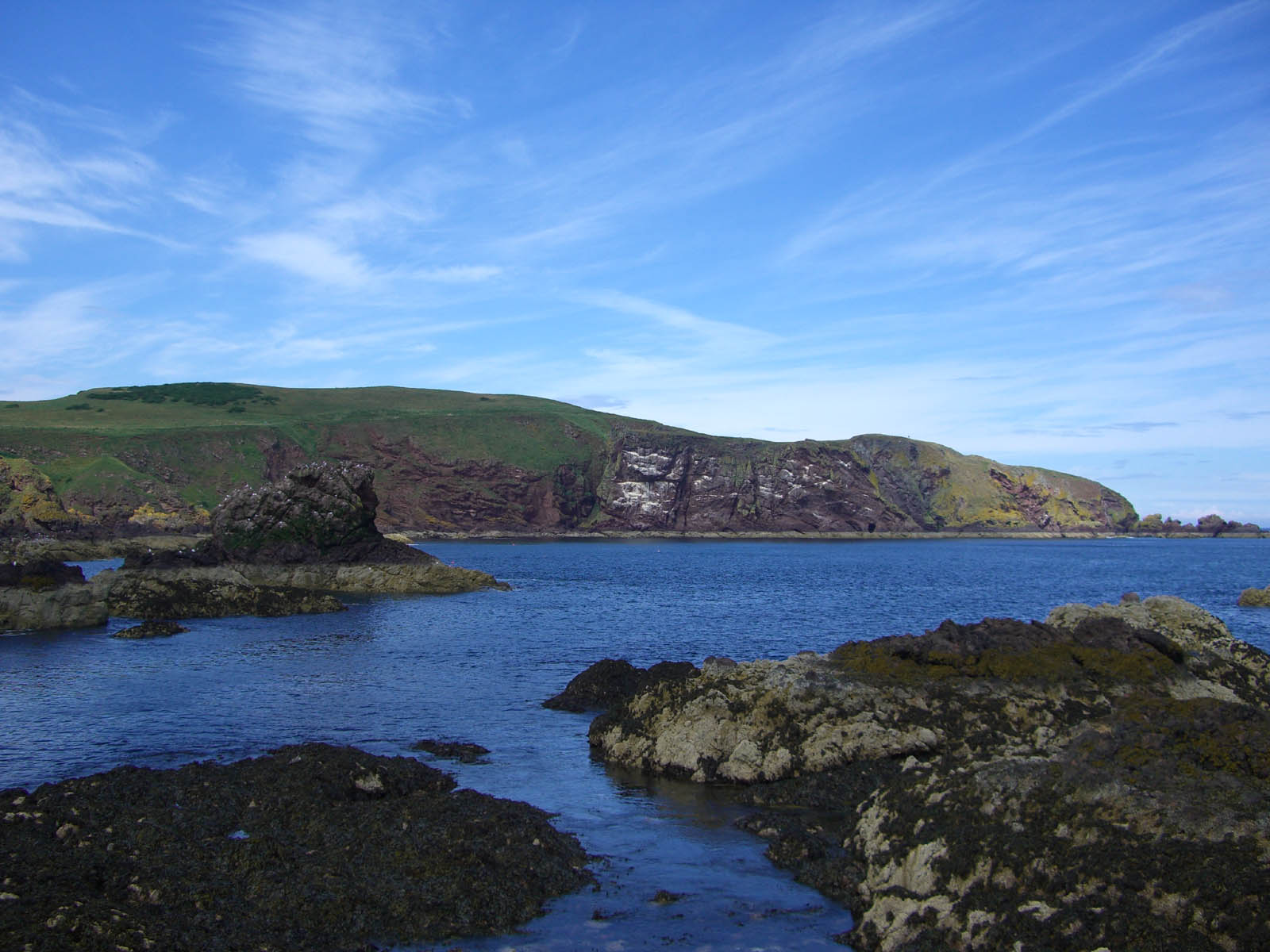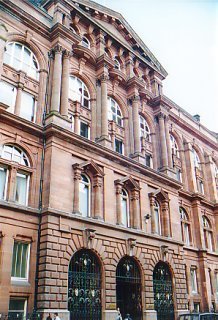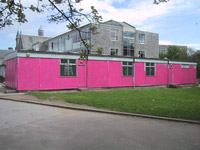|
William MacGregor (judge)
Sir William MacGregor, (20 October 1846 – 3 July 1919)R. B. Joyce,', ''Australian Dictionary of Biography'', Volume 5, Melbourne University Press, 1974, pp 158–160. Retrieved 29 September 2009 was a Lieutenant-Governor of British New Guinea, Governor of Lagos Colony, Governor of Newfoundland and Governor of Queensland. Early life MacGregor was born in Hillockhead, parish of Towie, Aberdeenshire, Scotland, the eldest son of John MacGregor, a crofter, and his wife Agnes, daughter of William Smith of Pitprone. MacGregor was educated at the school at the Strathmore manse, later a teacher at Tillyduke and worked as a farm labourer. Encouraged by his schoolmaster and the local doctor who recognised MacGregor's ability, he entered Aberdeen Grammar School in April 1866 and enrolled at the University of Aberdeen in October 1867. He graduated MB and CM of Aberdeen University in 1872, and obtained his MD in 1874. MacGregor also studied at Anderson's Medical College ( LFPS ... [...More Info...] [...Related Items...] OR: [Wikipedia] [Google] [Baidu] |
The Right Honourable
''The Right Honourable'' ( abbreviation: ''Rt Hon.'' or variations) is an honorific style traditionally applied to certain persons and collective bodies in the United Kingdom, the former British Empire and the Commonwealth of Nations. The term is predominantly used today as a style associated with the holding of certain senior public offices in the United Kingdom, Canada, New Zealand, and to a lesser extent, Australia. ''Right'' in this context is an adverb meaning 'very' or 'fully'. Grammatically, ''The Right Honourable'' is an adjectival phrase which gives information about a person. As such, it is not considered correct to apply it in direct address, nor to use it on its own as a title in place of a name; but rather it is used in the third person along with a name or noun to be modified. ''Right'' may be abbreviated to ''Rt'', and ''Honourable'' to ''Hon.'', or both. ''The'' is sometimes dropped in written abbreviated form, but is always pronounced. Countries with common or ... [...More Info...] [...Related Items...] OR: [Wikipedia] [Google] [Baidu] |
Berwickshire
Berwickshire ( gd, Siorrachd Bhearaig) is a historic county, registration county and lieutenancy area in south-eastern Scotland, on the English border. Berwickshire County Council existed from 1890 until 1975, when the area became part of the Borders region, with most of the historic county becoming part of the lower-tier Berwickshire district. Berwickshire district was abolished in 1996, when all the districts in the Borders region merged to become the Scottish Borders council area. The county takes its name from Berwick-upon-Tweed, its original county town, which was part of Scotland at the time of the county's formation in the twelfth century, but became part of England in 1482 after several centuries of swapping back and forth between the two kingdoms. After the loss of Berwick, Duns and Greenlaw both served as county town at different periods. The low-lying part of Berwickshire between the Tweed and the Lammermuirs is known as "the Merse", from an old Scots word for a ... [...More Info...] [...Related Items...] OR: [Wikipedia] [Google] [Baidu] |
Royal Lunatic Asylum, Aberdeen
Royal Cornhill Hospital is a psychiatric hospital in Westburn Road, Aberdeen, Scotland. It is managed by NHS Grampian. History The hospital was founded as the Aberdeen Lunatic Asylum in 1800. The city's dancing master, Francis Peacock, donated all the funds from the profits of his 1805 book on dancing to the asylum and an enlarged facility designed by Archibald Simpson opened in 1818. It was renamed the Aberdeen Royal Lunatic Asylum in 1852 and a new hospital for sick and acute cases was built to the north of the existing facility in 1896. Pavilions for the treatment of tuberculosis were added in the 1920s and the facility became the Aberdeen Royal Mental Hospital in 1933. It suffered from bomb damage, which resulted in four fatalities, in 1943 during the Second World War. The facility joined the National Health Service in 1948 and became the Royal Cornhill Hospital in 1964. It was completely redeveloped in the early 1990s and the new modernised facilities re-opened in 199 ... [...More Info...] [...Related Items...] OR: [Wikipedia] [Google] [Baidu] |
Royal College Of Physicians And Surgeons Of Glasgow
The Royal College of Physicians and Surgeons of Glasgow, is an institute of physicians and surgeons in Glasgow, Scotland. Founded by Peter Lowe after receiving a royal charter by James VI in 1599, as the Glasgow Faculty, it originally existed as a regulatory authority to ensure that physicians, surgeons and dentists In the West of Scotland were appropriately trained and regulated. In 1909, it achieved Royal recognition and became the Royal Faculty of Physicians and Surgeons of Glasgow (RFPSG). In 1962, following agreement with the other medical and surgical Royal Colleges in the UK it achieved collegiate status as the Royal College of Physicians and Surgeons of Glasgow (RCPSG), by which name it is known today. The College, in combination with the Royal College of Physicians of Edinburgh and the Royal College of Surgeons of Edinburgh provided a primary medical qualification which entitled the bearer to practice medicine, and was registerable with the General Medical Counc ... [...More Info...] [...Related Items...] OR: [Wikipedia] [Google] [Baidu] |
Anderson's Medical College
The University of Strathclyde ( gd, Oilthigh Shrath Chluaidh) is a public research university located in Glasgow, Scotland. Founded in 1796 as the Andersonian Institute, it is Glasgow's second-oldest university, having received its royal charter in 1964 as the first technological university in the United Kingdom. Taking its name from the historic Kingdom of Strathclyde, it is Scotland's third-largest university by number of students, with students and staff from over 100 countries. The institution was named University of the Year 2012 by Times Higher Education and again in 2019, becoming the first university to receive this award twice. The annual income of the institution for 2019–20 was £334.8 million of which £81.2 million was from research grants and contracts, with an expenditure of £298.8 million.. History The university was founded in 1796 through the will of John Anderson, professor of Natural Philosophy at the University of Glasgow, w ... [...More Info...] [...Related Items...] OR: [Wikipedia] [Google] [Baidu] |
Aberdeen University
, mottoeng = The fear of the Lord is the beginning of wisdom , established = , type = Public research universityAncient university , endowment = £58.4 million (2021) , budget = £235.9 million (2020–21) , principal = George Boyne , rector = Martina Chukwuma-Ezike , chancellor = The Queen , students = () , undergrad = () , postgrad = () , academic_staff = 1,086 (2018) , administrative_staff = 1,489 (2018) , doctoral = , location = Aberdeen, Scotland, UK , campus = College town , free_label = , free = , colours = (university colours) , mascot = Angus the Bull , affiliations = , website = , logo = University of Aberd ... [...More Info...] [...Related Items...] OR: [Wikipedia] [Google] [Baidu] |
Aberdeen Grammar School
Aberdeen Grammar School is a state secondary school in Aberdeen, Scotland. It is one of thirteen secondary schools run by the Aberdeen City Council educational department. It is the oldest school in the city and one of the oldest grammar schools in the United Kingdom, with a history spanning more than 750 years. Founded around 1257, the year used in official school records, it began operating as a boys' school. On Skene Street, near the centre of the city, it was originally situated on Schoolhill, near the current site of Robert Gordon's College. It moved to its current site in 1863, and became co-educational in 1973. In an annual survey run by the British broadsheet newspaper ''The Times'', Aberdeen Grammar was rated the 15th best Scottish state secondary school in 2019, and second in Aberdeen behind Cults Academy. The most notable former student is Lord Byron, the Romantic poet and writer who spent a short amount of time at the school before his move back to England as a 10 ... [...More Info...] [...Related Items...] OR: [Wikipedia] [Google] [Baidu] |
Sunday Mail (Brisbane)
''The Sunday Mail'' is a newspaper published on Sunday in Brisbane, Queensland, Australia. It is Brisbane's only Sunday newspaper. ''The Sunday Mail'' is published in tabloid format, comprising several sections that can be extracted and read separately. It is available for purchase throughout Queensland, most regions of Northern New South Wales and parts of the Northern Territory. Publishing The newspaper is published by Queensland Newspapers, part of News Corp Australia, whose parent company is News Corp. The editorial office is located at Bowen Hills, in Brisbane's inner northern suburbs, and the newspaper is printed in the suburb of Murarrie. Liz Deegan succeeded Michael Prain as editor in September 2006. Prain, who was editor of the newspaper for almost a decade, was appointed managing editor, digital media, of Queensland Newspapers. As she prepared to take over as editor, Deegan said: "I'm excited by the challenge of editing the biggest -selling newspaper in Australia's ... [...More Info...] [...Related Items...] OR: [Wikipedia] [Google] [Baidu] |
Crofter
A croft is a fenced or enclosed area of land, usually small and arable, and usually, but not always, with a crofter's dwelling thereon. A crofter is one who has tenure and use of the land, typically as a tenant farmer, especially in rural areas. Etymology The word ''croft'' is West Germanic in etymology and is now most familiar in Scotland, most crofts being in the Highlands and Islands area. Elsewhere the expression is generally archaic. In Scottish Gaelic, it is rendered (, plural ). Legislation in Scotland The Scottish croft is a small agricultural landholding of a type that has been subject to special legislation applying to the Scottish Highlands since 1886. The legislation was largely a response to the complaints and demands of tenant families who were victims of the Highland Clearances. The modern crofters or tenants appear very little in evidence before the beginning of the 18th century. They were tenants at will underneath the tacksman and wadsetters, but practi ... [...More Info...] [...Related Items...] OR: [Wikipedia] [Google] [Baidu] |
Governor Of Queensland
The governor of Queensland is the representative in the state of Queensland of the monarch of Australia. In an analogous way to the governor-general of Australia at the national level, the governor Governors of the Australian states, performs constitutional and ceremonial functions at the state level. In particular the governor has the power to appoint and dismiss the premier of Queensland and all other ministers in the Cabinet government, cabinet, and issue writs for the election of the Parliament of Queensland, state parliament. The current governor of Queensland, former Chief Health Officer of Queensland Jeannette Young, was sworn in on 1 November 2021. The chief justice of the Supreme Court of Queensland, currently Helen Bowskill, acts in the position of governor in the governor’s absence. As from June 2014, Queen Elizabeth II, upon the recommendation of then-Premier Campbell Newman, accorded all current, future and living former governors the title 'The Honourable' in pe ... [...More Info...] [...Related Items...] OR: [Wikipedia] [Google] [Baidu] |
Lieutenant-Governors Of Newfoundland And Labrador
The following is a list of the governors, commodore-governors, and lieutenant governors of Newfoundland and Labrador. Though the present day office of the lieutenant governor in Newfoundland and Labrador came into being only upon the province's entry into Canadian Confederation in 1949, the post is a continuation from the first governorship of Newfoundland in 1610. Proprietary governors of Newfoundland, 1610–1728 Governors of Plaisance, 1655–1713 Lieutenant-governors of Placentia, 1713–1770 Commodore-governors of Newfoundland, 1729–1825 The Commodore-Governor was a British Royal Navy official who was commander of the annual fishing convoy which left England each spring to fish off Newfoundland and was charged with protecting the convoys from harm. He was also responsible for various administrative and judicial functions, including assisting the fishing admirals in maintaining law and order and compiling the annual report on the fishery for the English government. ... [...More Info...] [...Related Items...] OR: [Wikipedia] [Google] [Baidu] |
Lieutenant-Governor Of British New Guinea
This article lists the colonial governors of Papua New Guinea, from the establishment of German New Guinea in 1884 until the independence of the Territory of Papua and New Guinea in 1975. List (Dates in italics indicate ''de facto'' continuation of office) New Guinea In 1945, the Territory of New Guinea was merged with the Territory of Papua to form the Territory of Papua and New Guinea. The merger was formalized with the passage of the Papua and New Guinea Act 1949. Papua In 1945, the Territory of Papua was merged with the Territory of New Guinea to form the Territory of Papua and New Guinea. The merger was formalized with the passage of the Papua and New Guinea Act 1949. Papua New Guinea On 16 September 1975, Papua New Guinea achieved independence following the passage of the Papua New Guinea Independence Act 1975. For a list of viceroys in Papua New Guinea after independence, see Governor-General of Papua New Guinea. See also * Papua New Guinea * ... [...More Info...] [...Related Items...] OR: [Wikipedia] [Google] [Baidu] |

_(cropped).jpg)


.jpg)



